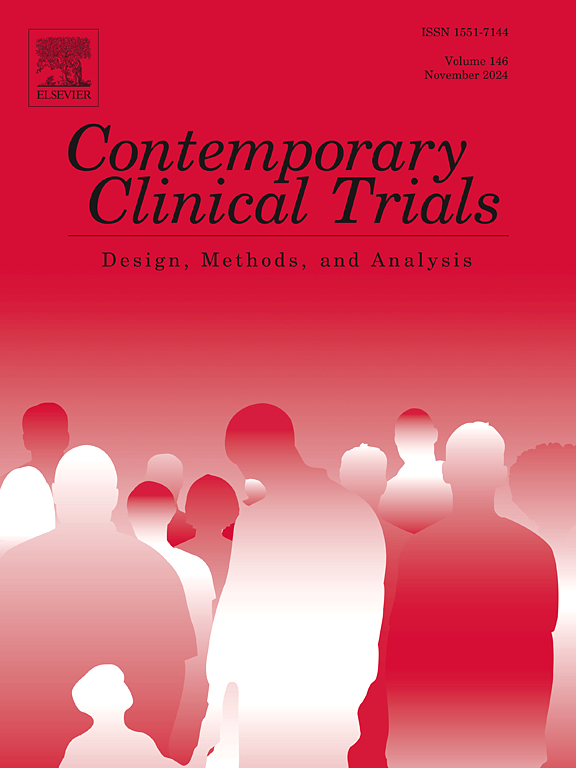在突发传染病大流行背景下实施无缝的2/3期研究设计:从ACTIV-2平台COVID-19治疗试验中吸取的经验教训
IF 2
3区 医学
Q3 MEDICINE, RESEARCH & EXPERIMENTAL
引用次数: 0
摘要
无缝 2/3 期研究设计为更高效的试验提供了一个框架。在 COVID-19 大流行期间,这种研究设计被认为特别有吸引力,因为当时全球迫切需要快速确定有效的治疗方法。然而,在大流行初期,可供决策参考的体内安全性和有效性数据非常有限。作为 ACTIV-2 研究的一部分,我们实施了一项 2/3 期平台试验,以评估针对 COVID-19 非住院成人患者的多种候选疗法。除了足够的安全性外,我们还根据临床或实验室指标的治疗效果来决定是否将一种药物从 2 期升级到 3 期。随着全球大流行期间可获得的数据越来越多,决定标准也在不断演变。阿穆巴单抗加罗姆鲁西单抗这种药物实现了无缝过渡,总样本量减少了约 20%。通过模拟研究和对五种 ACTIV-2 候选疗法进行毕业评估的实际结果,我们讨论了从我们的实施中吸取的经验教训,并对未来针对突发感染的干预措施的无缝试验提出了建议。本文章由计算机程序翻译,如有差异,请以英文原文为准。
Implementation of a seamless phase 2/3 study design in the setting of an emergent infectious disease pandemic: Lessons learned from the ACTIV-2 platform COVID-19 treatment trial
Seamless phase 2/3 study designs provide a framework for a more efficient trial. During the COVID-19 pandemic, such study designs were considered particularly appealing as there was an urgent global need to rapidly identify effective therapeutics. However, limited in vivo safety and efficacy data was available early in the pandemic to inform decisions. As part of the ACTIV-2 study, we implemented a phase 2/3 platform trial to evaluate multiple candidate treatments for non-hospitalized adults with COVID-19. In addition to an adequate safety profile, the decision to graduate an agent from phase 2 to phase 3 was based on showing treatment effects on clinical or laboratory markers. Decision criteria evolved over time as more data became available during the global pandemic. A seamless transition and approximately 20 % reduction in total sample size was achieved for one agent, amubarvimab plus romlusevimab. Using both simulation studies and actual results from graduation assessments of five ACTIV-2 candidate therapeutics, we provide a discussion of lessons learned from our implementation and recommendations for future seamless trials of interventions for emergent infections.
求助全文
通过发布文献求助,成功后即可免费获取论文全文。
去求助
来源期刊
CiteScore
3.70
自引率
4.50%
发文量
281
审稿时长
44 days
期刊介绍:
Contemporary Clinical Trials is an international peer reviewed journal that publishes manuscripts pertaining to all aspects of clinical trials, including, but not limited to, design, conduct, analysis, regulation and ethics. Manuscripts submitted should appeal to a readership drawn from disciplines including medicine, biostatistics, epidemiology, computer science, management science, behavioural science, pharmaceutical science, and bioethics. Full-length papers and short communications not exceeding 1,500 words, as well as systemic reviews of clinical trials and methodologies will be published. Perspectives/commentaries on current issues and the impact of clinical trials on the practice of medicine and health policy are also welcome.

 求助内容:
求助内容: 应助结果提醒方式:
应助结果提醒方式:


